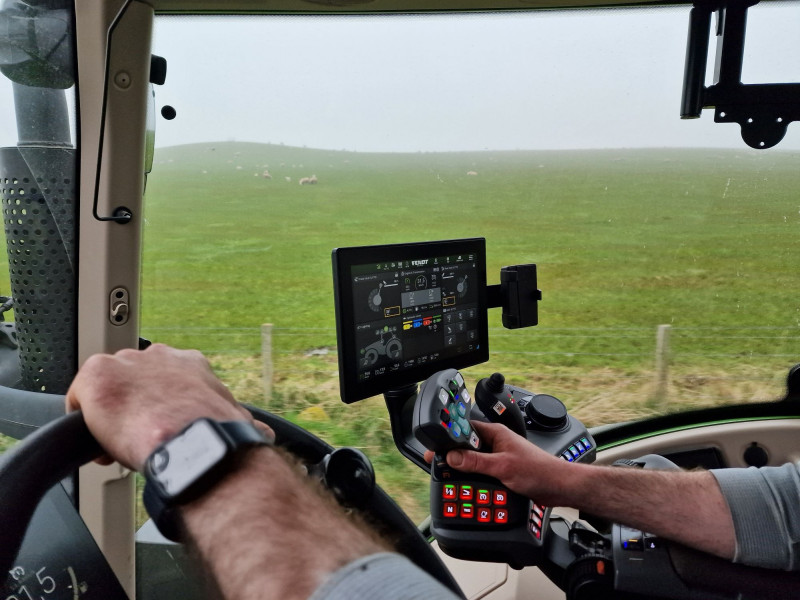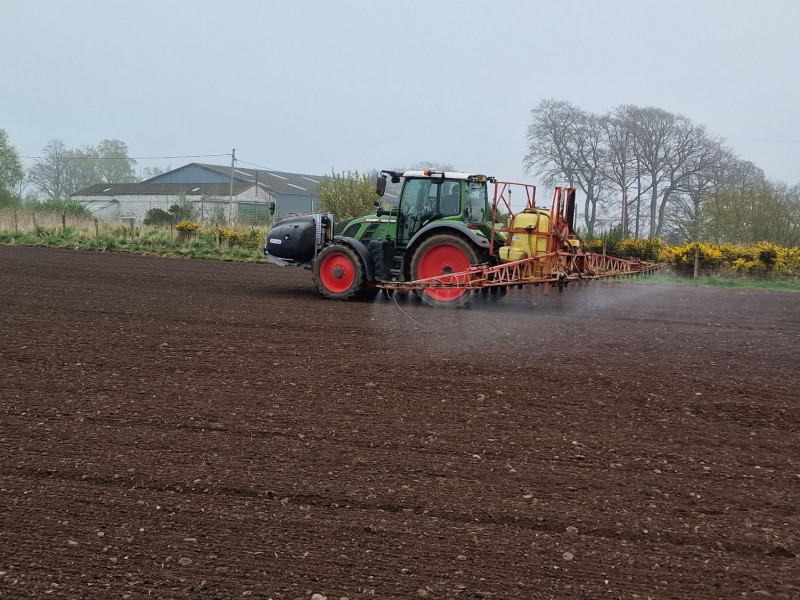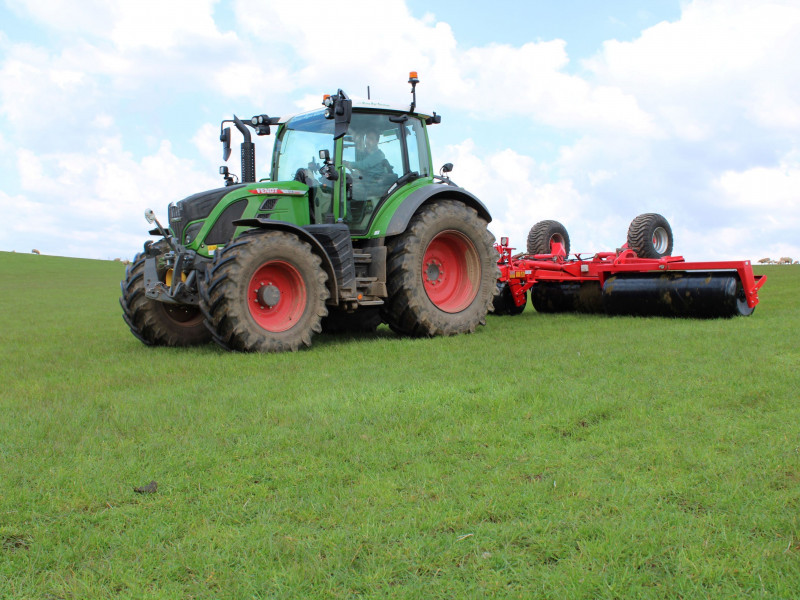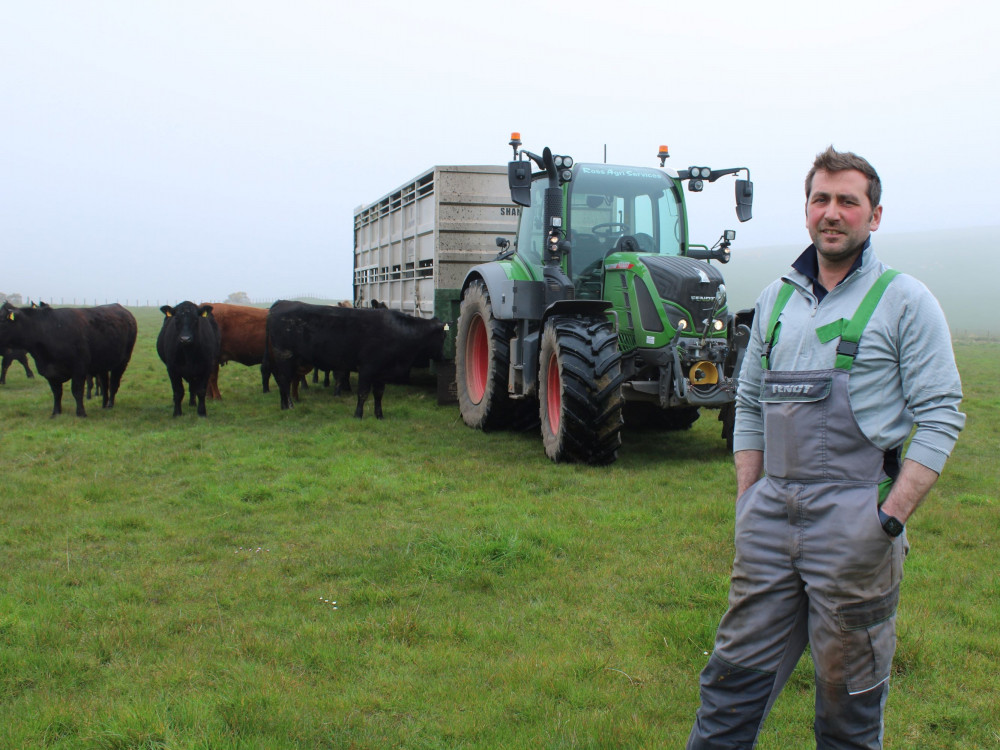
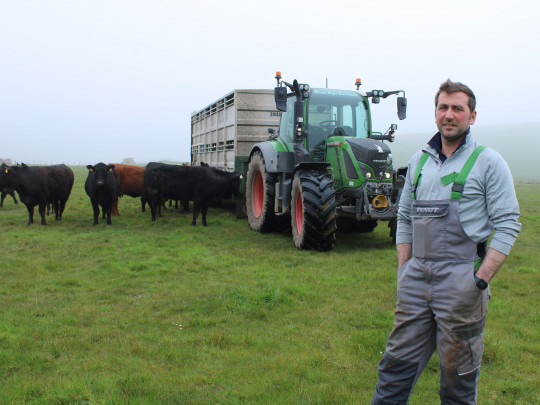
When 4 cylinders suffice
11th Jun 2024
Ally Mather bought his first Fendt in 2023, a move he never thought he would make. However, a year on and he has three Fendt tractors which are managing the bulk of the work at his family’s 4000-acre mixed farm near Brechin.
“There are seven family members in the partnership and we all need access to tractors for a mixture of work, from hauling cattle to ploughing fields and drilling cereals. The Fendt 516 I bought last year from Ross Agri has proved to all of us that there is little need for bigger, heavier, more expensive tractors here, and we are saving money whilst improving soil health,” says Mr Mather.
Half the land, 2000 acres, is set aside to permanent pasture for the 1800 Suffolk cross, Texel cross and Cheviot cross ewes. The farm also keeps a pedigree flock of Suffolk and Texel ewes. In addition, the farm rears 400 Aberdeen Angus cross cattle and a small pedigree herd, predominantly to breed replacement bulls.
“We have a further 1200 acres on rotation for silage, turnips and fodder beet, along with 800 acres of winter wheat, winter barley and spring barley,” he says.
Thankfully the farm benefits from fertile, easy to work, light loamy soils, making for easier cultivation and overall land management. Recognising this, and reflecting on the cost of machinery, led Mr Mather to question whether the farm needed ever increasingly powerful tractors.
“We had six-cylinder tractors before the 516 and in real terms they were no more powerful. The added weight meant that every time we were taking a tractor into a field to collect livestock, we were having a detrimental effect on the soil and causing more compaction than we needed to,” he says.
Following a chance experience with a Fendt 718 Vario, when helping out a neighbour, Mr Mather visited us to see if a new Fendt would be possible within his budget.
“Ross Agri were offering an 8000-hour, 8-year warranty that was very appealing and, when we priced the spec I needed, the price of the 516 was in the middle of similar tractors from other manufacturers,” he says.
The 516 Vario was delivered in June 2023, just a few weeks after Mr Mather placed the order which immediately helped fill a hole at a busy time of year.
“We do everything on farm and we were flat out with silage making so having the tractor arrive so quickly was a big help. Our tractors never really stop because we are always moving livestock and have plenty of field work to do,” he adds.
The 516 was joined soon after by a 514 and, a year on, a 312 has also been added to the fleet. His top of the range 516 provides 165 horsepower from a four-cylinder engine that features Fendt’s selective catalytic reduction (SCR) to reduce emissions and fuel consumption. The 514 Vario puts out 145 horsepower and shares the same technology, whilst the 312 offers 123 horsepower. All share the latest FendtONE cab which has standardised controls seen across the Fendt range and the ability to share data.
“The 516 has already proved it has more than enough power to plough and will be on the drill soon. The 514 does the bulk of the spraying with a Scorgie sprayer that uses a 1500 litre on the front and 2500 litre tank mounted on the rear axle. The 312 suits yard work and lighter field work including carting livestock, so between the three we have a good mix,” he says.
The 516 takes front and rear mowers to carry out the bulk of the mowing work which requires three cuts through the season.
“It can mow at speeds up to 15 km/h depending on the crop. It also has GPS, which I didn’t have on the previous tractors. This means we can share data between the 514 and 516, operate the fertiliser spreader with section control, and adjust to different crop and soil types more easily too,” he adds.
He suggests that by judging the best ballast for application, he is able to get the most out of the 516 without the expense of a larger six-cylinder tractor.
“We are predominantly a plough system but we min till stubble turnips after winter barley. We use Simba discs on the stubble and drill with a Horsch Pronto DC 3-metre which also has levelling discs. A 1500 kilo front weight ballast is perfect for this sort of work and the tractor handles and performs beyond what would be expected of its size and power output.”
Having run a calculator over all the tractors in the fleet, which includes modern six-cylinder John Deere, Valtra, Case and Massey Ferguson models, he is convinced that moving to the Fendts is saving the farm money.
“The difference between the 516 and a 718 with a similar specification is approximately £40,000. I accept that other brands could offer a similar six-cylinder tractor for less but I struggle to see how it could compete with the Fendt on fuel consumption or resale value,” he adds.
And this is where his argument in favour of four cylinders starts to gather momentum.
“When I price tractors, I price them like for like – so Vario for equivalent transmission, GPS, spool valves, everything needs to be as close a comparison as possible. On all three occasions the Fendts have come back as being better value for money,” he says.
He goes on to suggest that whilst purchase price and the specification is important, the ongoing cost of ownership is of equal importance.
“The 516 uses a little less diesel and a little more AdBlue. However, AdBlue is pennies and diesel is pounds, so overall it is saving a good amount each year in fuel.”
He also explains that the servicing cost so far has been less than with comparable six-cylinder tractors, suggesting that filters have been cheaper and servicing with us has been quick and easy.
“In nearly a year I have not felt a need for more power. I would rather spend a little more time with a lighter, cheaper to run tractor than be constantly chasing more power in an attempt to work faster,” he says.
He recalls how ploughing with the Fendt is easier than with six-cylinder tractors he has used in the past.
“We plough with a Kverneland five furrow with Packomat. The first thing I noticed was that it mounted much more easily to the 516. I set the speed at 8km/h and the tractor runs between 1400-1700rpm depending on soil type and gradient, which is good for a fairly light four-cylinder tractor,” he says.
By not relying on contractors, the farm has the flexibility to work when the conditions are right and when the crop is in peak condition.
“We can mow, drill or harvest when we need to. We have had good relationships with contractors in the past but having the machinery to manage everything on farm is helping us to grow better crops and produce better forage,” he says.
Whilst still in a relative honeymoon period with the Fendt tractors, Mr Mather is keen to make best use of the 8-year, 8000 hour warranty.
“To have Ross Agri local and know that the tractors are backed by an 8000 hour warranty is giving us the confidence to consider keeping them for longer. Moving to four-cylinder Fendts has been an eye-opener and one that we think will be a way for us to keep up by using pioneering technology whilst not suffering from overly high overheads,” he concludes
